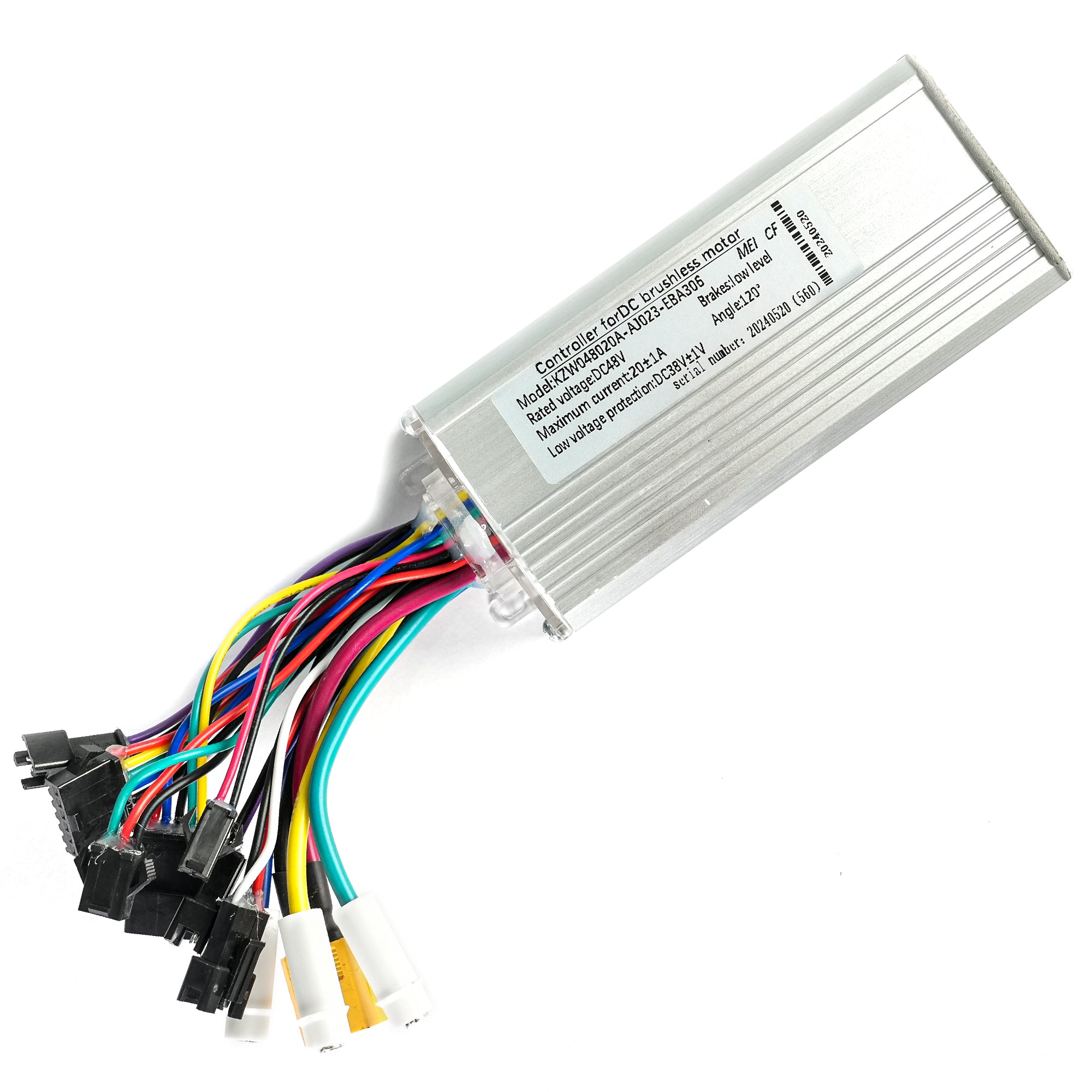What Is an Electric Bike Weight Limit?
An electric bike weight limit refers to the maximum total weight your e-bike can safely carry, including:
- The rider's weight
- Any passengers
- Cargo or accessories
- Additional equipment
Most e-bikes have weight ratings between 220-400 pounds (100-180 kg), though this varies by model and manufacturer.
Why Weight Limits Matter
Understanding your e-bike's weight limit is important because:
- Safety: Exceeding weight limits can compromise:
- Braking effectiveness
- Handling and stability
- Frame integrity
- Performance Impact:
- Battery range decreases
- Motor strain increases
- Acceleration becomes sluggish
- Warranty Considerations:
- Most warranties become void if weight limits are exceeded
- Damage from overloading isn't covered
Common Weight Ratings for Different E-bike Types
Different e-bike categories have varying weight capacities:
City/Commuter E-bikes
- Average weight limit: 250-300 lbs
- Designed for single riders with light cargo
Cargo E-bikes
- Weight capacity: 350-400 lbs
- Built for hauling cargo and passengers
- Reinforced frames and heavy-duty components
Mountain E-bikes
- Typical limit: 275-325 lbs
- Balanced for off-road performance
- Factor in gear weight for trails
Folding E-bikes
- Usually 220-265 lbs
- Compact design affects capacity
- Best for lighter loads
How to Calculate Your E-Bike’s Safe Load
Calculating your bike's safe load involves more than just reading the numbers on a label; it's about making sure your ride remains stable and efficient.
Step-by-Step Calculation
- Check the Manufacturer Specs: Start with the manufacturer's suggested weight limit.
- Add Rider and Cargo Weight: Calculate the total weight, including yourself, gear, and any additional load.
- Consider the Accessories: Remember that accessories, like baskets or panniers, also add to the weight.
Are Fat Tire E-Bikes More Suitable for Heavy Riders?
Fat tire e-bikes often prove to be excellent choices for heavier riders, thanks to their robust design and enhanced stability. Here's why these specialized e-bikes might be your ideal choice:
Key Advantages for Heavy Riders
- Enhanced weight distribution across wider contact surfaces
- Better stability on various terrain types
- Improved shock absorption through larger air volume
- Stronger frame construction to support wider tires
- Greater overall durability and load capacity
Technical Specifications Comparison
|
Feature |
Fat Tire E-Bike |
Standard E-Bike |
|
Tire Width |
4-5 inches |
1.5-2.5 inches |
|
Weight Capacity |
300-400 lbs |
250-300 lbs |
|
Frame Strength |
Heavy-duty |
Standard |
|
Stability |
Superior |
Moderate |
|
Surface Adaptability |
High |
Limited |
Performance Benefits
Fat tire e-bikes provide exceptional traction and stability, making them particularly suitable for riders over 250 pounds. The wider tires distribute your weight more evenly, reducing stress on the frame and components. These bikes typically feature reinforced frames and more powerful motors to handle additional weight effectively.
THINGS TO CONSIDER WHEN CHOOSING AN E-BIKE WEIGHT CAPACITY
WHAT WILL YOU BE USING THE E-BIKE FOR?
Your intended use significantly impacts the weight capacity you'll need. Consider these common usage scenarios:
|
Usage Type |
Recommended Weight Capacity |
|
Commuting |
250-300 lbs |
|
Cargo Hauling |
350-400 lbs |
|
Recreational Riding |
250-275 lbs |
|
Adventure/Off-road |
300-350 lbs |
WHO WILL BE RIDING WITH YOU?
When selecting weight capacity, account for:
- Your own weight
- Weight of potential passengers
- Additional gear or cargo
- Safety margin (typically 10-15%)
TERRAIN
The terrain you'll be riding on plays a crucial role in weight capacity requirements:
- Flat Roads: Standard weight capacities usually suffice
- Hills and Mountains:
- Need higher weight capacity
- Consider reduced effective capacity on steep inclines
- Off-road Trails:
- Require robust weight capacity
- Factor in impact forces from bumps and jumps
- Add 20% to your calculated needed capacity
Your riding environment directly affects how much weight your e-bike can safely handle. For urban commuting on flat terrain, a lower capacity might be sufficient. However, if you're planning to tackle hills or carry cargo, you'll need a higher weight capacity to maintain performance and safety.
How Does Overweight Riding Affect the Battery Life of an E-bike?
Exceeding your e-bike's weight capacity can significantly impact its battery performance and longevity. Here's how overweight riding affects your e-bike's battery:
Impact on Battery Performance
- Increased power consumption
- Reduced range per charge
- Faster battery drain
- More frequent charging cycles
- Potential battery stress
When you exceed your e-bike's weight limit, the motor requires more power to maintain speed and climb hills. This increased demand forces your battery to work harder, leading to:
- Shorter rides between charges
- Decreased battery efficiency
- Higher risk of battery overheating
- Accelerated wear on battery components
- Potential voltage fluctuations
Conclusion
Knowing your e-bike's weight limits and choosing the right capacity for your needs is crucial for both safety and performance. From understanding basic weight restrictions to considering factors like frame material and tire type, you now have the knowledge to make an informed decision about the e-bike that best suits your requirements. Remember that weight capacity isn't just about the rider - it includes everything from cargo to accessories.
To get the most out of your e-bike investment, select a model that comfortably accommodates your weight while leaving room for essential cargo. Always follow the manufacturer's guidelines, perform regular maintenance checks, and practice safe loading habits. Whether you're a daily commuter or weekend adventurer, the right e-bike with appropriate weight capacity will ensure countless miles of safe, enjoyable riding.

















 Electric Inflator Pump
Electric Inflator Pump
 Ebike Locks
Ebike Locks
 Phone Holder
Phone Holder
















 Payment
Payment Afterpay Financing
Afterpay Financing Warranty
Warranty Shipping Policy
Shipping Policy Exclusive Discounts
Exclusive Discounts Track Your Order
Track Your Order Return & Refund
Return & Refund Referrals & Membership
Referrals & Membership User Manual
User Manual Contact Us
Contact Us FAQs
FAQs













